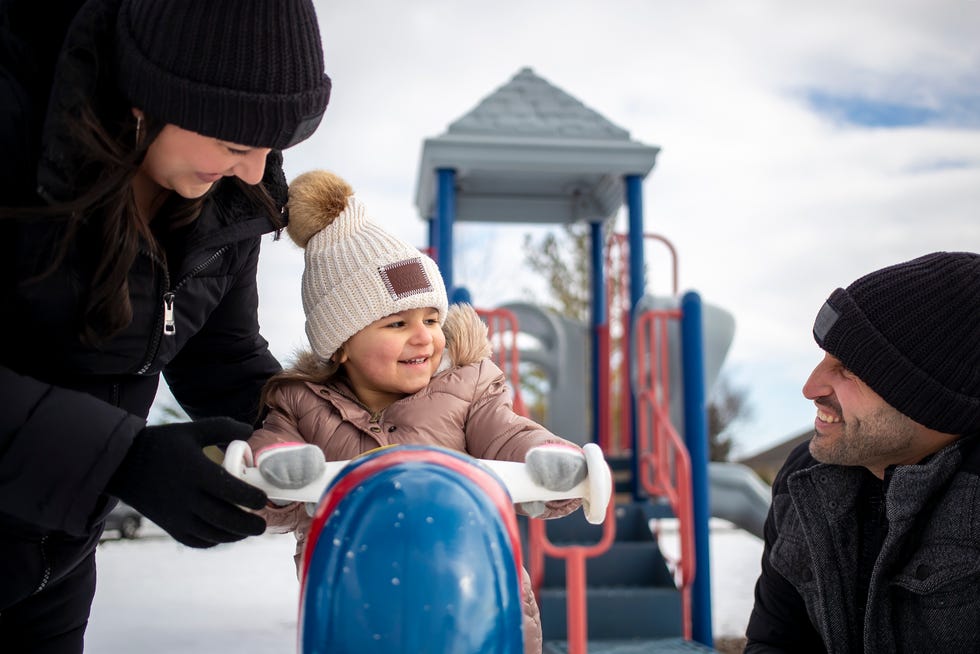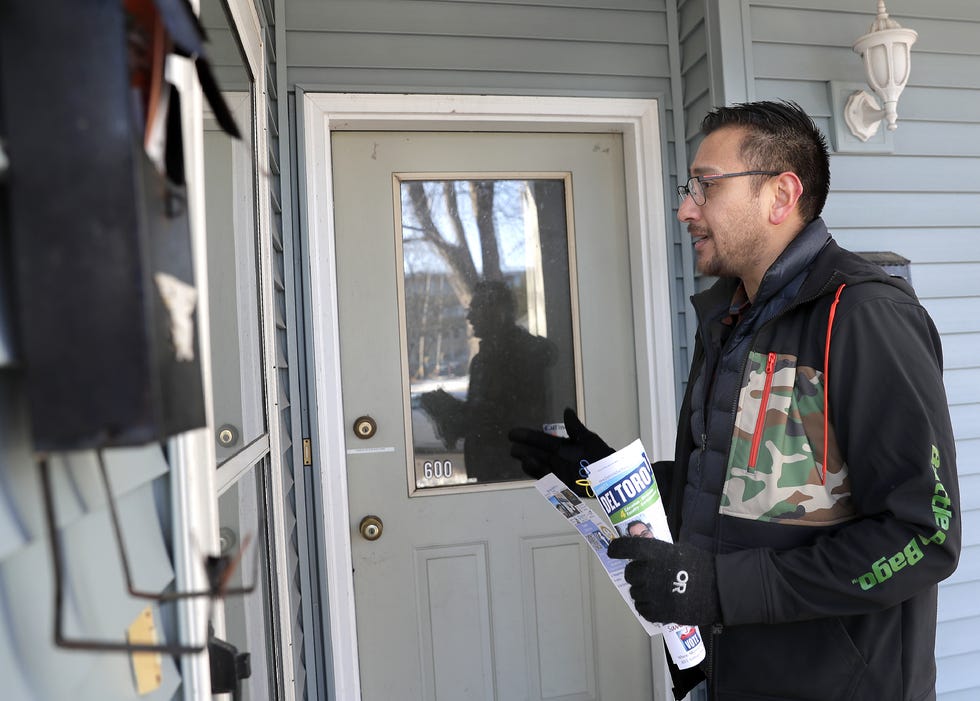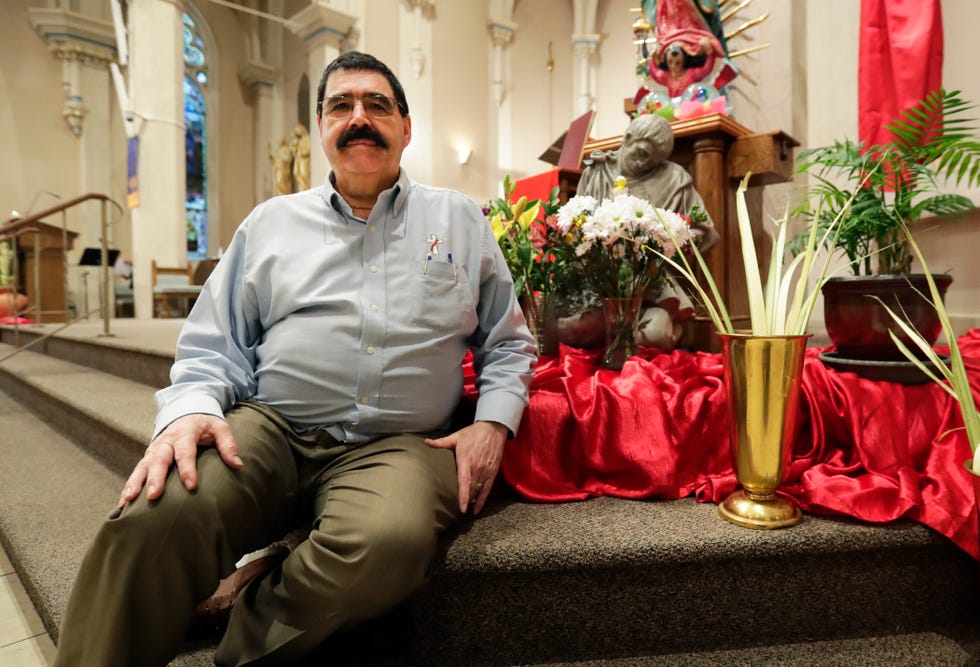Opportunity.
It’s a recurring theme when you ask people why they choose to live in northeastern Wisconsin.
Good jobs, affordable homes, quality schools and safe communities in which to raise families have drawn people to the region for generations and kept them anchored here.
Those same considerations are behind the eye-opening increase in the region’s racial and ethnic diversity as documented in the 2020 U.S. Census.
For some, learning that minority populations significantly outgrew the white population over the past decade may have come as a surprise. For others, the census simply put numbers to something they’d already observed at work, in schools or at the store.
This year, we’ve been exploring the stories behind those numbers — what that growing diversity means to the region, why it’s happening and how it’s contributing to the vibrancy of our communities.
We’ve talked with Black, Asian, Indigenous and Hispanic business owners, workers, community advocates, parents, students and others to share their experiences, to hear from them about the opportunities they’ve found in northeast Wisconsin and also to understand the ongoing challenges of living in what remain predominantly white places.
Among the stories this ongoing series has explored:
- The rise of the region’s Hispanic population, the largest minority group in Brown, Outagamie and Winnebago counties, which now accounts for 40% of the people living in some parts of Green Bay.
- The role of churches, mosques and temples in anchoring communities and fostering a sense of place.
- The journey of the Hmong people, who arrived as refugees from Southeast Asia following the war in Vietnam, and how they carved out lives in a new country.
Through our reporting we met fascinating people and heard uplifting stories of overcoming obstacles, building lives and communities, and working to create better, more inclusive places for the next generation.

Here’s a sampling of the more surprising or illuminating things we’ve learned so far:
Hispanic people have been here longer than you might think
Spanish-speaking people likely arrived in Wisconsin even before it gained statehood, but the Hispanic communities we know today are rooted in the hard work of later arrivals — generations of migrant workers who came to the state each year to work in farm fields and other agricultural businesses.
Hispanic people began coming to Wisconsin in significant numbers in the 1920s, when farms and factories turned to Texas and Mexico for workers in the wake of restrictions on European immigration following World War I. The Great Depression ended that opportunity, but World War II brought a new need for workers, resulting in the Bracero guest-worker program. By the time it ended in the 1960s, the program brought more than 4 million Mexican workers to the country, and thousands to Wisconsin.
“In the late 1940s, that’s really when the Green Bay area, and the surrounding rural areas, has the first imprint of a Latino population,” said Sergio Gonzalez, assistant professor of Latino Studies at Marquette University.

We’re way more multiracial, but that’s because the census finally asked
According to the 2020 census, multiracial people are the fastest growing population in northeast Wisconsin and across the nation. In Brown, Outagamie and Winnebago counties, the number of people who identified in the census as multiracial grew 270% from 2010.
These aren’t new residents. Instead, the stunning increase reflects a revised census format that allowed people to more fully express their ancestry.
Jesus Smith, an associate professor of ethnic studies at Lawrence University, points out that the census, since its inception in 1790, has been based on constructions of race that reflected each era’s politics, social theories and moment in history. From that first tally of the nation’s population, when only free white people, other free people and slaves were counted, the census pigeonholed people into categories that failed to reflect the reality of the nation’s diversity and the intermingling of races.
“For so long, the census, a government-run agency, has forced people to identify in certain ways, and it would originally provide the categories and they would send out census enumerators to go determine what people’s race was, which, if you are multiracial, how does that even make sense?” Smith said.
The change in format for the 2020 census allowed someone who is Black, Asian and Hispanic, for instance, to record that ancestral richness on their census form, and those responses shined a new light on diversity.

More than 50 languages in a single school district
To catch a glimpse of how the region is changing and how it will look in the future, you need go no further than the area’s schools.
The Oshkosh school district reported more than 50 languages other than English are spoken by the children of recent immigrants and refugees. In Appleton, 41 languages are spoken among students and families, and in Green Bay students speak 25 different languages.
The numbers reflect a diversity of backgrounds and cultures. The students and their families have come from around the world: Africa, Europe, Mexico and Central America, Asia.
Lacking staff who are able to speak each language, school districts use a mix of English learning classes and immersion in other classrooms to help students gain the language skills and confidence they need to succeed in school and in their lives.
Youa Lor’s family moved to Oshkosh from Laos in 2019. She’s a junior at Oshkosh North High School, where Tara Koji’s classroom is a study hall of sorts for students who need one-on-one support. For Lor, it’s become a comfortable place that has helped her learn English and find greater confidence.
“It feels like home,” she said.
READ MORE:Five? A dozen? 30? Students in northeast Wisconsin schools speak more languages than you may guess

Wisconsin nice has a dark, racist side
Northeastern Wisconsin is making strides in becoming a more equitable and inclusive place that celebrates its growing diversity, but even so, racism continues to rear its ugly head.
Hmong residents we spoke with recounted a renewed wave of anti-Asian attitudes in the wake of the coronavirus, and recently elected Appleton Common Council member Israel Del Toro talked about how a house fire, apparently set intentionally by people who also left behind anti-Hispanic and anti-Semitic graffiti, spurred his desire to run for office.
Those episodes and many others point to the still difficult work ahead on diversity, equity and inclusion.
“Pardon the pun here, but it sort of lit a fire under me to really, really get going and say, ‘No, I am here. I’m going to stay here. I’m going to make a difference in my community,'” said Del Toro, 36, an assistant professor of biology at Lawrence University.
The price of freedom was often death
The first group of Hmong refugees arrived in Wisconsin in the late 1970s and early 1980s in the wake of the U.S. withdrawal from Vietnam.
Much of their history is well-documented. As allies of the U.S. in the war in Vietnam, they faced persecution and death as a result of the role they played fighting the North Vietnamese and Pathet Lao in what came to be known as the Secret War.

The stories we heard of how Hmong families fled Laos, first to refugee camps in Thailand and, later, to the United States and other countries, are a vivid reminder of the sacrifices they made, the hardships they endured and a tenacious will to build new lives in a foreign land.
Pao Lor, of Kimberly, recounted how his father was assassinated by communists and his mother drowned during a dangerous crossing of the Mekong River as the family fled Laos.
Lor was 5 years old.
He lived in refugee camps before arriving in California and then moving to Green Bay, where his uncle had settled, and began to learn to navigate the new land that had become his home.
“Many of us were 6, 7, 8, 9, 10 years old,” he said. “So for many of us, America was really our home. We could say, ‘This is going to be something where we’re going to stay for a very long time.'”
Lor is now an education professor at the University of Wisconsin-Green Bay, and is the author of Modern Jungles: A Hmong Refugee’s Childhood Story of Survival.
READ MORE:Living in Wisconsin: ‘Hmong people are truly American, if not more American than most Americans’
Wisconsin had its own César Chavez
Jesus Salas grew up in a family of migrant farm workers.
His parents and his grandparents came to from Texas to Wisconsin each year to work the fields west of Oshkosh.
Born in 1943, the third-generation American was given the opportunity to break free of migrant work by his parents, who settled in Wautoma in 1959 to stop the nomadic existence of farm work and allow their children to live in a place where they would be able to finish school and go to college.
Salas attended the University of Wisconsin-Oshkosh and found his calling when representatives of the state Department of Children and Families asked him to help start a child care program for migrant families.
The work led him, at 22, to became a founder of Obreros Unidos, a farmworkers union that organized protests and walkouts to demand better pay and improved working conditions at farms and factories.
Inspired by César Chaves’ work for migrant rights in California, Salas led a march in 1966 from Wautoma to Madison to raise awareness of working conditions on Wisconsin’s farms. Three years later, he became executive director of United Migrant Opportunity Services, a Milwaukee-based nonprofit focused on improving employment, education, health and housing opportunities for migrants.
That work helped inspire Gov. Patrick Lucy to create a task force in 1971 to bolster upward mobility among members of the state’s Spanish-speaking communities, which in turn set the stage for the state’s bilingual-bicultural education law in 1991, the migrant labor law, and access to a network of social services.
UMOS later led an effort to encourage workers to leave the migrant stream, settle in Wisconsin and raise their children here. That work played a significant role in the rapid growth of urban Hispanic populations and the vibrant business communities that have followed.
Equity and inclusion is intentional
The 2020 census paints a picture of a changing region.
White populations shrank in Green Bay, Appleton and Oshkosh as more people moved to the surrounding counties. Meanwhile, minority populations surged as the region became home to a growing number of Black, Asian, Indigenous and Hispanic residents.
But numbers only tell part of the story — they’re the cold facts that underscore the challenge of making communities welcoming places with equal opportunities for people of all races and backgrounds.
That takes an intentional effort on the part of individuals, local governments, businesses and schools.
During a discussion on the topic hosted by FoxValley365, as part of a NEW News Lab media collaboration with the Green Bay Press-Gazette and The Post-Crescent of Appleton, panelists stressed that hiring to improve diversity in workplaces is only a start. The important follow-up is to change culture to one that empowers all workers and draws fully on the unique perspectives of each person.
“If there’s diversity of thought in the room, then innovation starts happening and it completely has a huge effect on a business outcome,” said Raiya Sankari-Diaz, diversity coordinator for the city of Green Bay.
That applies not just to workplaces and institutions, but to our personal lives as well.
In a recent interview, Green Bay Packers President and CEO Mark Murphy said social justice issues became clear and real for him as he listened to players discuss what life was like for them growing up, with routine incidents of discrimination that “as a white man I can’t relate to.”
He said those conversations are something to be valued, not feared.
“If you only surround yourself with people who look like you and think like you, you’re really limiting yourself,” Murphy said.
Contact Karl Ebert at (920) 431-8302 or kebert@gannett.com. Follow him on Twitter at @karlwebert.


